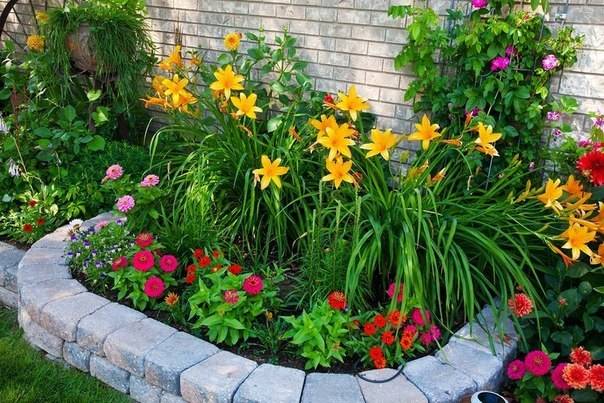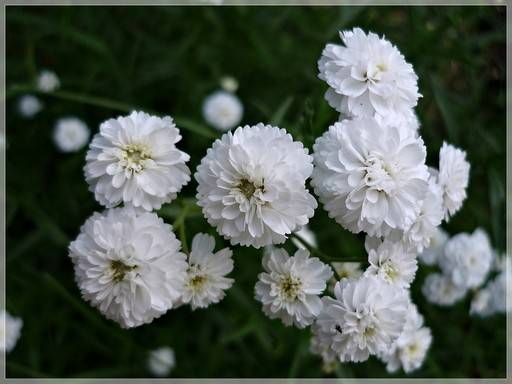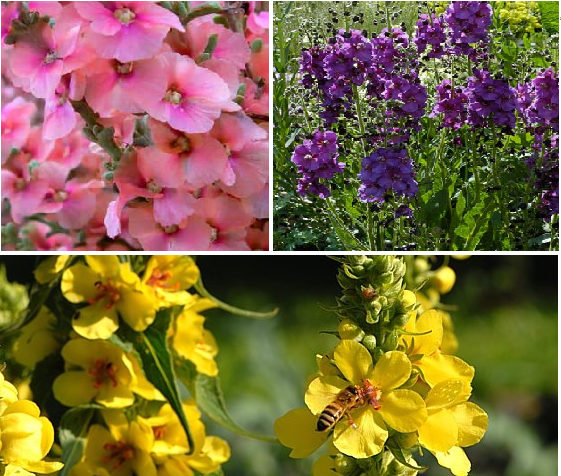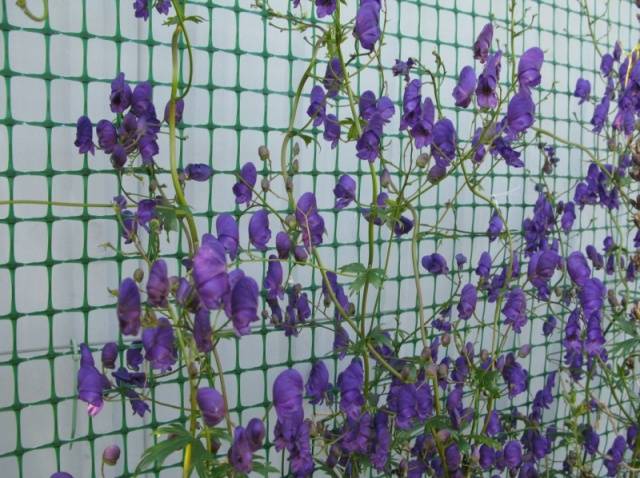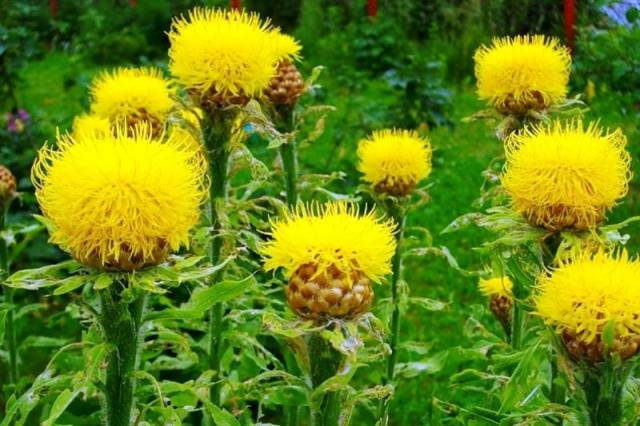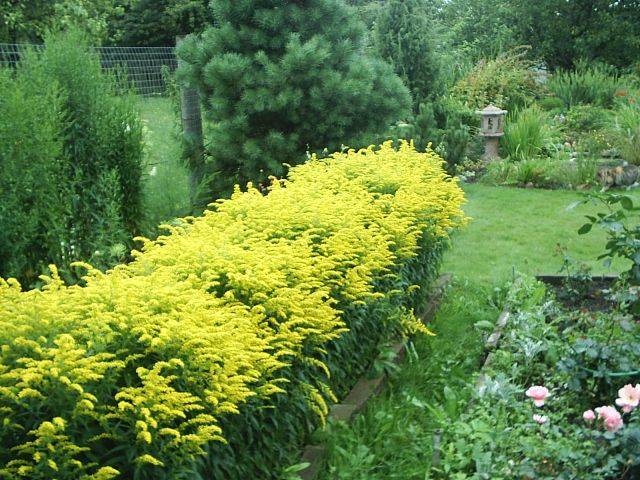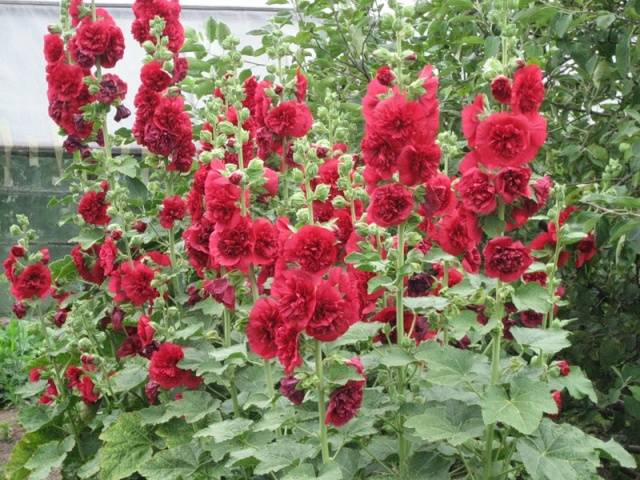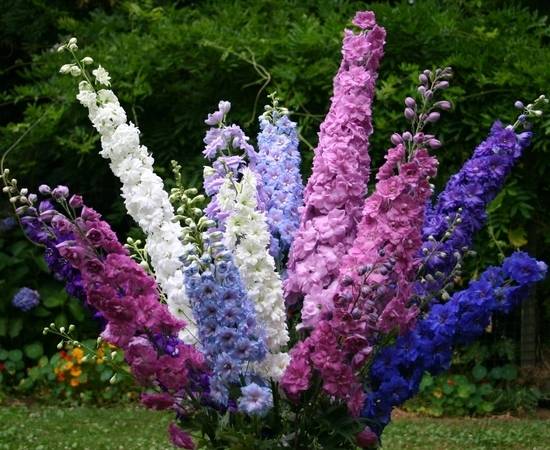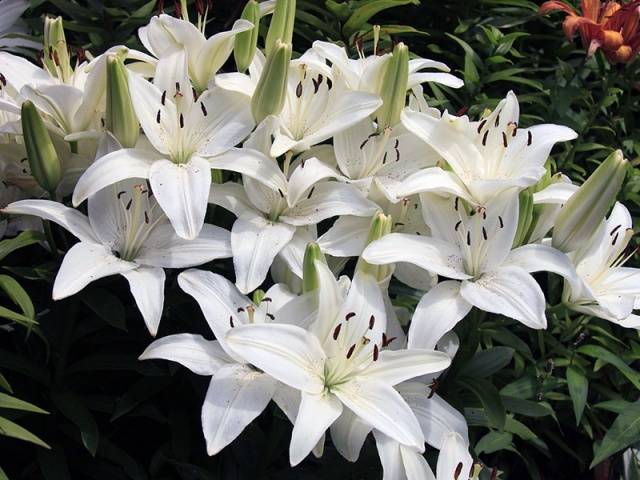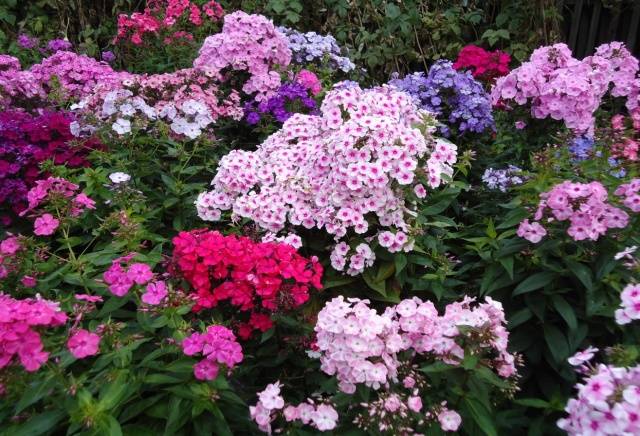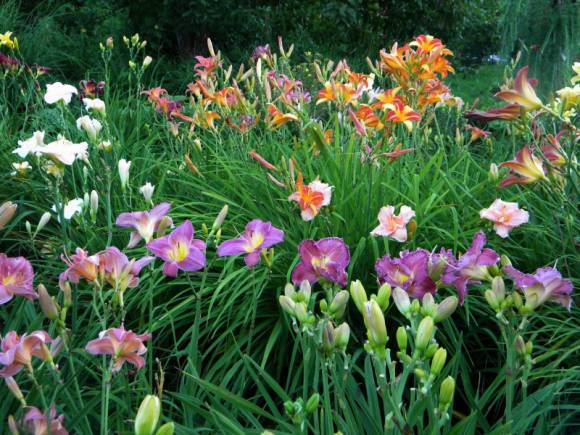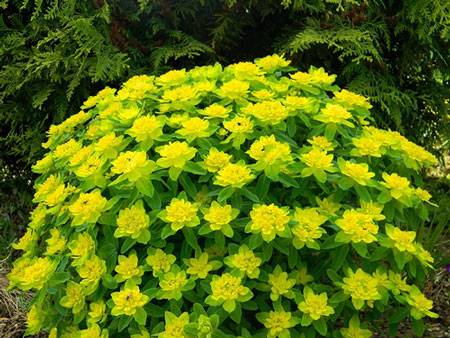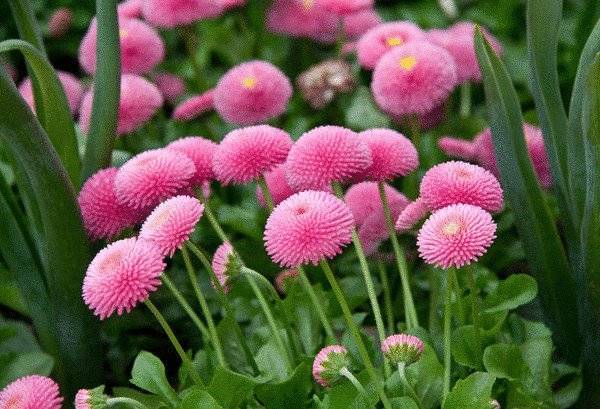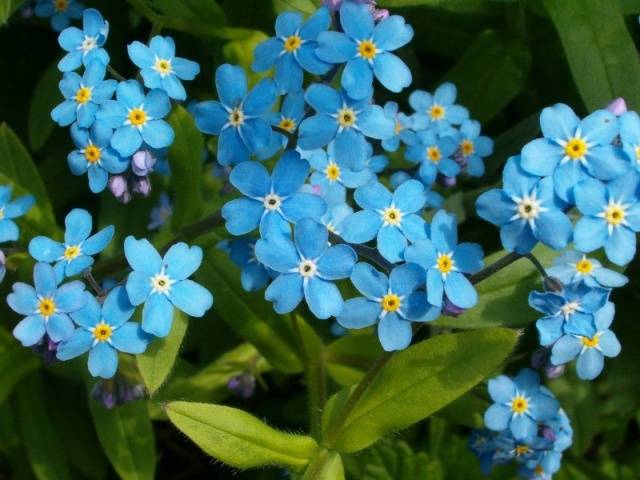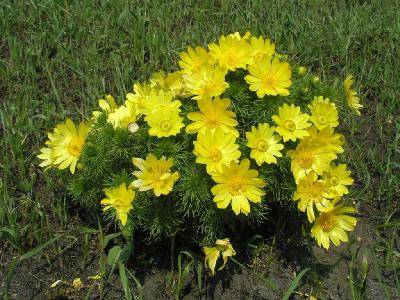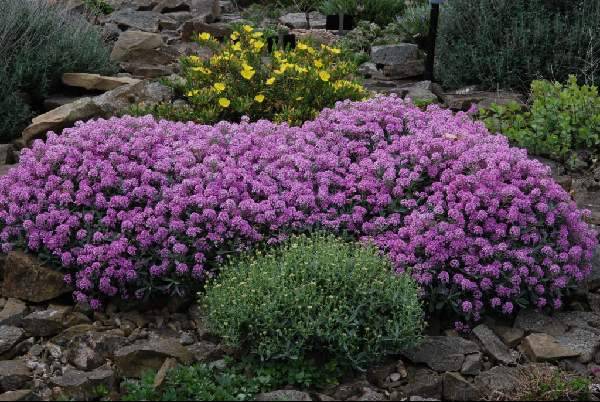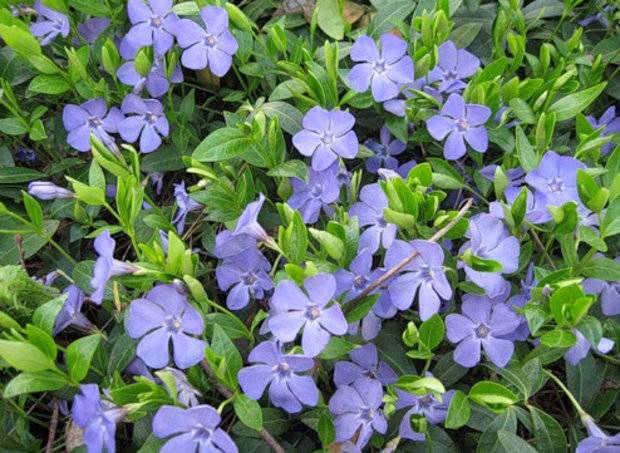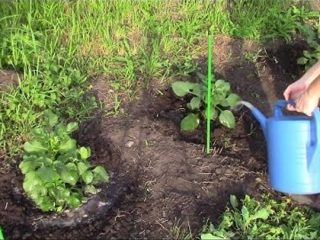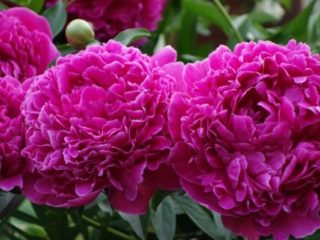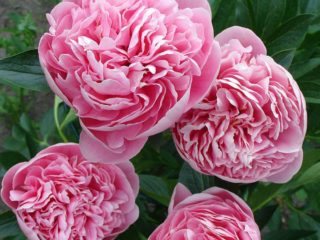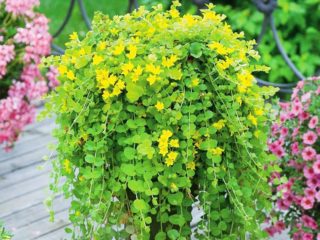Gardeners often use flowering perennials to create flower beds. With their help, it is easy to create a beautiful composition that will delight the eye for several years. Perennials do not require special attention and care. Most of these flowers are resistant to cold weather and do not require digging up for the winter. Plants retain their decorative qualities throughout the spring-autumn period and do not need to be cut. Selecting perennial flowers for a flower bed is quite simple if you know the existing species and varieties such plants, as well as some of their characteristics.
When filling a flowerbed with perennials, you should understand that all types of such plants differ, first of all, in height, as well as in the flowering period, shape and color of flowers. When composing compositions, it is these parameters that you need to pay attention to. We will try to provide a description and photo with the names of the most popular and beautiful perennials, classifying them by height.
Tall perennials
By definition, tall flowers are flowers whose height during the flowering period exceeds 80 cm.Among such plants we can distinguish unpretentious species, the root system of which is compact, extending vertically deep into the ground. These include gypsophila paniculata, mullein, aconite, and dahlia. These perennials survive various weather disasters remarkably well, including drought.
Gypsophila paniculata
This wonderful perennial plant reaches a height of 120 cm. It grows in the form of a bush, which during flowering looks like a white cloud. This effect is made possible thanks to the huge number of small flowers, up to 6 mm in diameter, and thin, barely noticeable leaves. Gypsophila flowers are white, sometimes with a pink tint. Inflorescences can be simple or double.
Blooms gypsophila for 45 days from July to August. It is often used as a cut flower to complement flower bouquets. A perennial can grow in one place for 3-4 years without replanting.
Mullein
This plant can be found growing wild on the edge of a field or forest clearing. In culture there are also many varieties of this beautiful, unpretentious, drought-resistant plant.
Mullein leaves are squat, up to 25 cm long, collected in a rosette. The inflorescences are located on peduncles, the height of which can reach 2 m. The color of the flowers, depending on the variety, can be brown, yellow, pink, purple.
Aconite arcuate
Wonderful tall, perennial plant can decorate any garden with its flowers from August until the onset of frost. Such a non-standard flowering period makes aconite popular in creating constantly flowering flower beds.
Aconite inflorescences are located on high, up to 2 m, peduncles. They can be tied to the wall of a building or a fence to decorate the surface. The color of the flowers is violet, sometimes whitish. In some cases, flowers can combine purple and white shades at once.
Among the tall perennial flowers with a spreading root system one can distinguish large-headed cornflower, goldenrod, mallow, and delphinium. These plants are more demanding of soil moisture and nutrition and require special care.
Large-headed cornflower
This tall perennial can bring yellow, sunny colors to any flower bed. The plant is a bush that does not require staking. Its stems are strong, up to 1.5 m high. Large-headed cornflower blooms from July to September. Cornflower flowers are single, large.
goldenrod
Goldenrod is a widespread ornamental plant. It can be found in every second yard. The stems of the plant are tall (up to 2 m), erect, leafy. At the tops of the stems there are baskets with lush, yellow inflorescences. Goldenrod blooms in late summer. The plant does not require much care. For the winter, it is necessary to trim the bushes to a height of 10-15 cm from ground level.
Mallow
A tall, perennial plant, well known to many gardeners. There are many varieties of mallow with different flower colors. Among them there are varieties with peony-shaped and a simple flower, white, pink, yellow, burgundy, purple.
You can learn more about the types and varieties of mallow from the video:
7
The height of the flowering perennial reaches 120 cm.The flowering period is approximately 70 days, occurring in June-August. Mallow should be grown in well-lit areas of land.
Delphinium
Legends were made about this flower in ancient times, but even today it amazes with its beauty. There are more than 400 different species of delphinium. Among them there are annual and perennial plants.
The height of the delphinium reaches 180 cm. Its durable peduncles are abundantly strewn with beautiful small flowers of various colors: white, blue, purple, pink. In nature, there are more than 800 different shades of delphinium. The size of the flowers may also vary. For example, there are varieties with double inflorescences up to 12 cm in diameter.
In addition to the listed flowering perennials, Volzhanka, Rudbeckia, Highlanders and some others should also be classified as tall. When selecting tall perennials for the garden, you need to pay attention to their photosensitivity in order to correctly determine the best growing location. Such plants must be replanted at least once every 5 years.
Medium height perennials
The tallness of perennials plays a particularly important role when creating combined flower beds, where several different types of plants are involved at once. In this case, the principle of tiering applies, when lower plants are placed closer to the edge of the flower bed, tall flowers are placed further from the viewing point. Thus, the bulk of plants in the flower garden are of average height. Medium-sized flowers include flowers with a height of 30 to 80 cm. Among them are:
Irises
This perennial is unique for its varied colors.Flowers with a height of 40 to 70 cm can be pink, yellow, white, brown, purple or another shade. Flowering of plants begins at the end of May and continues until mid-summer. Growing irises is very simple, since the perennial is completely unpretentious and successfully tolerates drought and severe winter frosts.
You can see the beauty of these flowers in the photo below; the gardener’s comments and an overview of the varieties are given in the video:
Lilies
It’s rare to meet a person who doesn’t “like” these wonderful flowers for a flower bed. There are more than 30 types of garden lilies. They all differ in color and flower shape. The height of perennials is also different and can vary from 60 to 120 cm. Lilies bloom from late June to August. This beautiful perennial flower is often used as a cut flower for bouquets.
Phloxes
Phloxes are widespread in gardens and parks in Russia. They are undemanding to soil and sunlight, and are well adapted to shade. The height and color of phlox depends on the variety. Thus, you can find phloxes up to 100 cm high, however, the average plant height is only 60 cm. More often, gardeners grow white and pink phloxes, however, breeders also offer flowers in purple, blue, burgundy and other shades. The flowers of some varieties combine several different shades at once.
You can learn more about the variety of phlox from the video:
The flowering period of phlox begins in mid-summer and lasts until the end of September.
Daylilies
If you want to plant a flowering perennial, but don’t have time to care for it, then you should grow daylily. This plant is extremely unpretentious. It can be grown on the poorest soils, forgetting about fertilizing.Daylily survives drought and summer heat well.
The decorative qualities of daylily are high: flowers with a diameter of up to 18 cm can have white, cream, pink, red, purple or another shade. The height of daylily is from 40 to 60 cm. The plant can be used as the main and only plant in a flowerbed or as an additional perennial in the middle zone in a flowerbed.
Euphorbia multiflora
Under this name “euphorbia” you can find a number of plants, including indoor and perennial garden plants. Euphorbia multiflorum is excellent for making flower arrangements in flower beds, alpine slides and mixborders. The height of this plant is up to 70 cm. The perennial blooms with yellow, small flowers collected in inflorescences. The flowering period of milkweed continues throughout the summer.
In addition to the above-mentioned perennials, daffodils, peonies, tulips and some other flowering plants that are familiar to many are medium-sized. When planting combinations of tall and medium-sized perennials, you should pay attention to the spreading nature of their green mass and the type of root system, so that the plants do not suppress each other during the growth process.
Low-growing perennials
Low-growing perennial flowers are great for decorating lawns, flower beds, and flower beds. They are planted along sidewalk paths, near a pond or porch. These flowers, up to 30 cm high, look wonderful anywhere. Most low-growing perennials have an early flowering period and delight with beautiful flowers immediately after the snow melts.Among the most common low-growing perennials, the following species should be distinguished:
Daisy
This beautiful flower captivates with its beauty and simplicity. The squat, fleshy green leaves seem to display small flowers on tall peduncles. Daisy flowers come in a variety of colors from white to dark burgundy. There are varieties with combined petal colors. On sale you can find daisies with simple and dense flowers.
Plants are absolutely not demanding in terms of care. They can grow even in the poorest soils. Daisies bloom in early spring, immediately after the snow melts. Abundant flowering continues until mid-summer. In favorable conditions, the daisy can bloom all season.
Forget-me-not
Forget-me-not is a well-known primrose. Its flowering period is from April to May. This amazing plant can be found in nature and in culture. There are many varieties of forget-me-nots with different inflorescence shapes and flower sizes. A perennial up to 30 cm high, it reproduces well on its own, which is why it is sometimes called weed.
The peduncle of the plant is covered with leaves and holds the inflorescences at a height of 20-25 cm. Forget-me-not flowers are blue with a yellow eye in the middle.
Adonis spring
You can add yellow colors to your flowerbed using spring Adonis. This plant can be found in cultivation and in nature. It has divided, narrow petals, similar to a Christmas tree. The peduncle of the plant has a height of 15-20 cm. Each flower consists of 12 petals. After flowering ends, which peaks in mid-spring, adonis produces fruits - small, but, unfortunately, inedible nuts.
Alyssum
The plant is perennial, however, some gardeners grow alyssum for one season in pots and cache-pots. A ground cover flower with a variety of colors from white to purple, including yellow, pink, and red shades. The height of the perennial is up to 30 cm. It blooms continuously from May to July.
With the help of alyssum, you can not only decorate a flower bed or flower garden, but also saturate your garden plot with a pleasant, alluring aroma.
Periwinkle
This perennial can brighten up any yard or garden with a dense carpet of green and blue flowers. The plant is a ground cover, well adapted to unfavorable conditions. Having planted periwinkle, you can forget about watering or fertilizing, since the plant has enough available resources of the earth and natural precipitation.
The flowers of this plant do not exceed 10 cm in height and 2.5 cm in diameter. The perennial reproduces on its own quite quickly. Its flowering occurs in mid-spring.
Conclusion
By combining perennials of different heights, you can create an excellent flower bed in which plants will bloom, constantly replacing each other. In such a composition, tall flowers should be placed in the center, and low-growing perennials closer to the edge, so that the plants do not shade each other. Low-growing groundcover plants can be safely used to fill the free space of mixborders. Well-chosen combinations of flowers of various shades will always decorate a garden or lawn. A pleasant floral aroma will also add an unusual ambiance to your garden plot.
